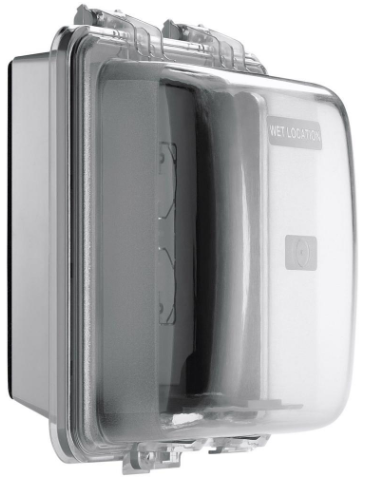Receptacles in Areas That Are Damp or Wet


As home inspectors we always recommend Ground Fault Circuit Interrupters (GFCI) receptacles are installed in wet or damp areas. We should also be looking at the cover on the receptacle; there is a difference. There is also a difference, by definition of a “wet” or “damp” area. A wet area is defined as being exposed to large amounts of water (on an exterior wall not protected by a roof, near a pool or hot tub). A damp area is defined as being exposed to small amounts of liquid (basement, crawl space, under an awning). Receptacles located in wet areas should have a cover that is weatherproof when a plug is in it. Receptacles located in damp areas should have a cover that is weatherproof when a plug is not in it. They have a cap that covers the receptacle. As earlier stated they will be either GFCI or AFCI protected. So what should a home inspector be looking for:
- Loose or damaged receptacles
- Protective cover is damaged, loose or missing
- Gap between receptacle and protective cover plate
- Incorrect ampacity
- Improperly wired
- Unapproved exterior wiring used
- Open ground / reversed polarity
- Scorching
- Serviced by an extension cord, drop cord, or other unapproved wiring methods
- Unsafe location
- 240 Volt circuit not supplied by a 4 conductors
Related Articles:
- Inspecting Exterior Electrical Components
- Surge Protection For Your House (VIDEO)
- GFCI Inspections
- Modern Low Voltage Lighting
Want To Learn More? Click HERE to Search Our Full Database Of Home Inspector Newsletters.



